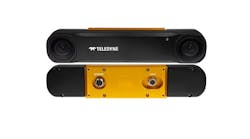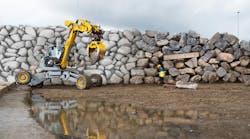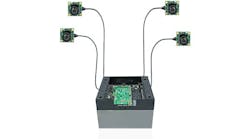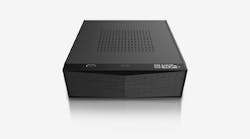Artificial intelligence (AI) has become a nearly ubiquitous term in modern society, but it means vastly different things to different people. In the general public, people might think of things like chat bots or generative AI that can create images or text, or even some of the exaggerated science fiction concepts introduced in movies and TV. Within industrial automation, however, AI represents something much different.
In industrial automation, AI has unlocked new possibilities when paired with the proper tried-and-true technologies such as “traditional” machine vision algorithms, cameras, lighting, optics, and often, robots. One ongoing trend in the marketplace over the past few years has been the rising popularity of application-specific systems that leverage technology advances into a single system, making it easier for businesses of all types to adopt automation. Purpose-built systems like these —which often incorporate robots, AI-enabled software, and traditional machine vision techniques and components—have lowered the barrier of adoption in automation while also adding new flexibility to these systems.
AI Adds Flexibility, Opens New Doors
Bin picking is a great example of an application-specific system where different technologies work together to accomplish a specific task. Typically consisting of a 3D machine vision system, a robotic manipulator, and software, bin picking systems pick up objects from containers such as bins and totes and place them onto another surface, such as a conveyor or a shelf. Deploying a bin picking system helps companies across different industries increase productivity and efficiency while allowing human employees to perform more meaningful work in different areas within the company. While bin picking applications present challenges, these systems can add tremendous value when successfully implemented.
In warehousing and manufacturing environments, for example, companies deploy robotic pick-and-place solutions to automate material handling tasks such as parcel handling, palletizing and depalletizing, or medical kitting. Long considered a challenging automation application, bin picking has become more approachable today because of various technological advancements, including 3D cameras.
Consider some of the challenges in bin picking and robotic pick and place today, which include tasking the robot with picking a vast array of different products, picking reflective or shiny objects, and keeping up with the cycle time requirements for today’s fast-paced manufacturing and logistics environments. Advances in 3D imaging have eased these problems, as cameras today can deliver the sensing accuracy needed to pick products of widely varying size, shape, reflectivity, and color at optimal speed.
Introducing AI-enabled software into a bin picking application adds even more flexibility to the system in four critical ways:
1. AI enables bin picking systems to improve their object detection and picking accuracy as they learn over time.
2. AI allows the system to recognize and pick a much wider variety of parts.
3. AI gives robots the intelligence required to perform value-added tasks after the pick—such as assembly, machine tending, packaging, and even disentangling small parts.
4. AI-driven systems require much less configuration and custom programming.
These four main benefits of AI-enabled software mean that businesses can now get bin picking systems up and running in production on the plant floor faster than before, and with increased productivity and reliability.
The Future of Automation
The success of the overall system is not just driven by the addition of AI-enabled software or the latest 3D camera, however. True success comes as the vendor community in the automation space adapts and evolves their products and offerings to keep pace with ever expanding customer needs, while others—including systems integrators, OEMs, and consultants—continue to develop new methods for the different technologies that improve upon the status quo and deliver optimal results.
The past few years have shown us all how important industrial automation technology is now and how fundamental it will remain to driving increased throughput, improved productivity, and revenue growth in today’s ultra-competitive and evolving business landscape. As automation systems become more capable and easier to use, we’ll see even more applications emerge in new industries across the globe, which is one of the things that is most exciting about being part of this community.






